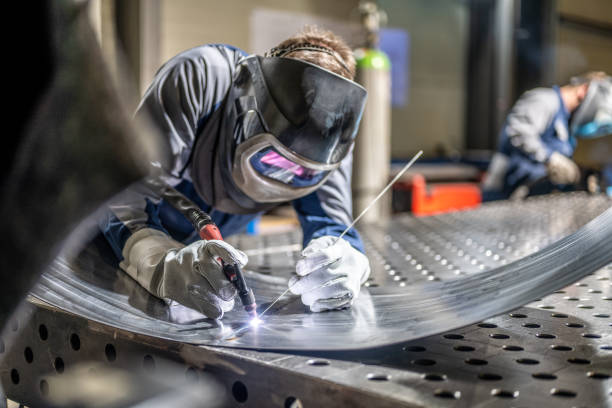What are the basic processes in the sheet metal manufacturing industry?
Sheet metal manufacturing is the process of creating sheet metal parts by cutting, bending, and forming thin metal sheets into specific shapes and sizes. The process typically uses coating, cutting, bending, and assembly techniques.the sheet metal manufacturing industry involves several fundamental processes that transform flat metal sheets into finished parts or assemblies. These processes can generally be grouped into cutting, forming, joining, and finishing operations.
Here’s a clear overview:
1. Cutting Processes
Used to separate sheets into desired shapes or sizes.
Common methods:
Shearing – Straight-line cutting using a shear or guillotine.
Laser cutting – Precise, clean cuts using a focused laser beam.
Plasma cutting – Uses ionized gas for thick metals.
Waterjet cutting – Uses high-pressure water with abrasives for heat-free cutting.
Punching – Uses dies and punches to create holes or shapes.
Blanking – Cutting a flat piece (blank) from the sheet for further forming.
2. Forming Processes
These change the shape of the metal without removing material.
Main types:
Bending – Folding sheet metal along a straight axis (e.g., press brake).
Deep drawing – Pulling metal into a die cavity to form cups, boxes, or enclosures.
Stamping – High-speed forming using dies (can include punching, bending, and drawing).
Rolling – Reducing thickness or forming curves using rollers.
Spinning – Forming circular parts (e.g., cones, domes) on a lathe.
3. Joining Processes
Used to assemble parts into a complete product.
Typical methods:
Welding – Fusion joining (MIG, TIG, spot welding, etc.).
Riveting – Mechanical fastening using rivets.
Bolting or screwing – Threaded fasteners for detachable joints.
Adhesive bonding – Using industrial adhesives for lightweight or dissimilar materials.
4. Finishing Processes
Improve surface quality, appearance, and corrosion resistance.
Examples:
Deburring – Removing sharp edges or burrs.
Grinding & polishing – Smoothing or shining the surface.
Plating or coating – Zinc, nickel, or chrome plating.
Painting or powder coating – Aesthetic and corrosion protection.
Anodizing – Protective oxide layer (for aluminum).
Galvanizing or e-coating – Anti-rust coatings for steel.
5. Assembly & Inspection
Final steps to ensure product quality and performance.
Assembly – Combining all components into final products.
Inspection & testing – Dimensional checks, strength tests, surface finish inspection, etc.
Sheet Metal Project Links:
sheet metal fabrication companies in china | china sheet metal fabrication companies | china sheet metal fabrication manufacturers | sheet metal fabrication companies china | china sheet metal fabrication factory | china sheet metal enclosure fabrication supplier | china sheet metal fabrication suppliers | china sheet metal fabrication parts manufacturer | china sheet metal enclosure fabrication supplier | china sheet metal parts manufacturers | china sheet metal electronic enclosures manufacturer | china aluminium sheet metal fabrication supplier | china precision sheet metal fabrication manufacturer | china precision sheet metal fabricators | metal box maker

